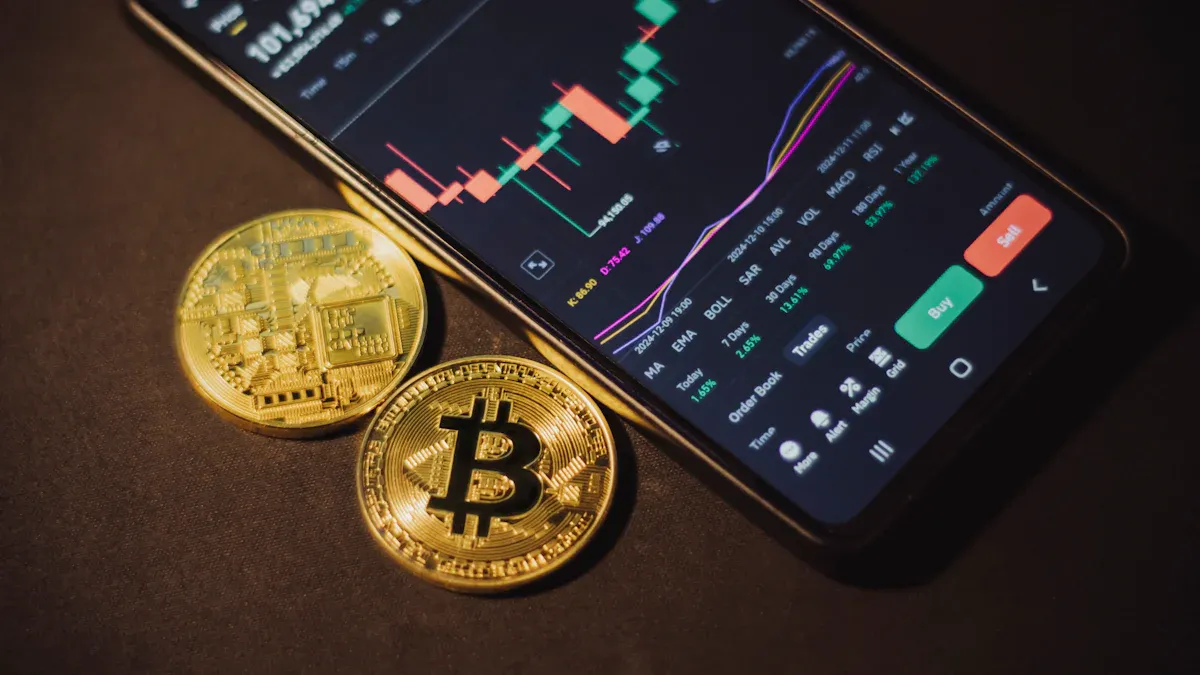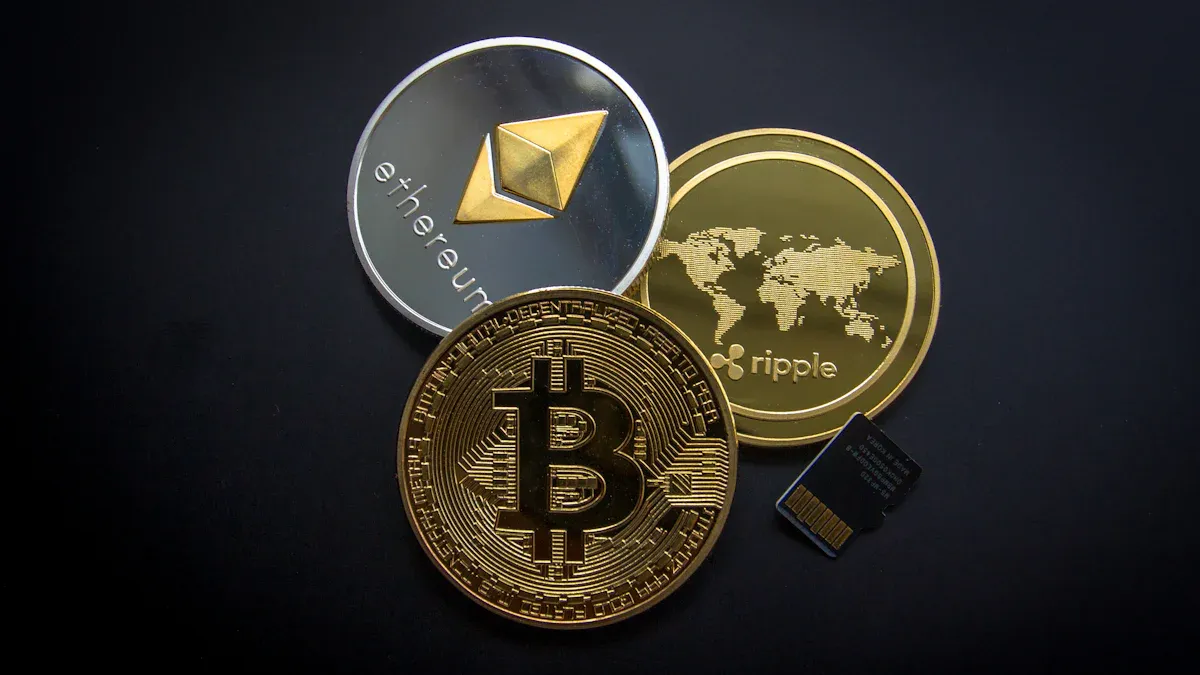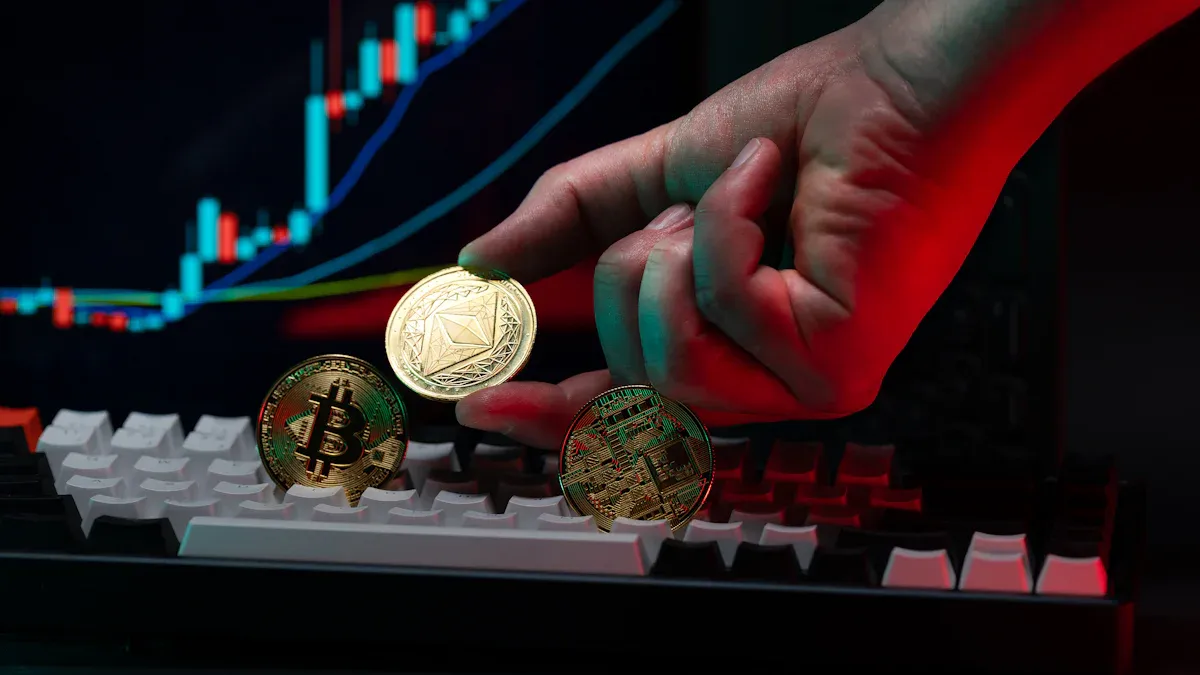- EasyCard
- Trade
- Help
- Announcement
- Academy
- SWIFT Code
- Iban Number
- Referral
- Customer Service
- Blog
- Creator
Sending Money from China to Malaysia: Is Stablecoin USDT a Better Choice?

Image Source: pexels
Yes, when considering remittances from China to Malaysia, for users pursuing low costs and high efficiency, USDT is usually the better choice. The rise of stablecoins is reshaping the global payment landscape.
- Tether (USDT)'s circulation has exceeded over $155 billion, accounting for more than 60% of the global stablecoin supply.
- As of August 2025, the annual transaction volume of stablecoins has broken through $4 trillion, demonstrating its strong market acceptance.
Important Note This article aims to provide information and operational references. All content does not constitute any financial or legal advice. You should make your own judgments and bear all related risks before conducting any operations.
Key Points
- USDT remittances are cheaper and faster than traditional banks because they use blockchain technology.
- You can purchase USDT through C2C platforms and then send it to the recipient in Malaysia.
- In Malaysia, the recipient can sell USDT and exchange it for local currency.
- When transferring, be sure to confirm the network type and address are correct to prevent fund loss.
- Choose secure trading platforms and be vigilant against price fluctuations and scam risks.
USDT Remittances: A Revolution in Cost and Speed

Image Source: pexels
Compared with traditional banks and remittance companies, USDT demonstrates disruptive advantages in cost, speed, and convenience. You will find that this is not just a new payment tool but a revolution in efficiency.
Ultimate Cost Savings
Traditional bank cross-border wire transfers usually incur high fees. These fees include outgoing fees, intermediary bank handling fees, and currency exchange spreads, with total costs possibly reaching 6% or more of the remittance amount.
USDT remittances completely change this situation. Your main cost is the blockchain network’s “Gas fee,” namely the miner fee. By choosing efficient blockchain networks, you can reduce costs to almost negligible levels.
- TRON (TRC-20) Network: This is one of the most popular USDT transfer networks currently. Fees vary depending on whether the recipient wallet is empty.
- Transferring to a wallet that already has USDT, fees are usually between $1-3.
- Transferring to a brand-new empty wallet, fees are slightly higher, approximately $6-7.
- Solana (SPL) Network: This is an emerging network known for low fees and high speed. Sending USDT on the Solana network has an average transaction fee of only about $0.10.
Let’s intuitively compare through a table:
| Remittance Method | Estimated Cost (for $5,000 remittance example) | Savings Compared to Traditional Bank |
|---|---|---|
| Traditional Bank Wire Transfer | Approx. $300 (at 6%) | - |
| USDT (TRON Network) | Approx. $1-3 | Up to 99% |
| USDT (Solana Network) | Approx. $0.10 | Over 99% |
Operation Tip Before transferring, be sure to confirm that the network type (such as TRC-20 or SPL) used by you and the recipient is exactly the same. Choosing the wrong network will result in permanent loss of funds.
Minute-Level Arrival Speed
Time is money, especially when dealing with funds. The long waits of traditional remittances are often anxiety-inducing.
- SWIFT Transfer: Remitting through the bank’s SWIFT system, funds usually take 1 to 5 business days to reach the recipient’s account. If holidays are encountered or the bank’s anti-money laundering (AML) review is triggered, the time will be further extended.
- Blockchain Transfer: USDT utilizes blockchain technology to achieve near real-time point-to-point transfers. Transactions can be confirmed in minutes.
Specifically, USDT transaction confirmation on the TRON network is extremely fast. After the transaction is broadcast, it usually receives the first confirmation within 3-5 seconds, and funds appear in the recipient’s wallet in less than one minute.
| Payment Method | Average Settlement Time |
|---|---|
| Traditional SWIFT | 1-5 business days |
| Blockchain Settlement (USDT) | Within 3 minutes |
This speed advantage means your funds can almost instantly reach the recipient in Malaysia, greatly enhancing fund liquidity and usage efficiency.
Anytime, Anywhere Operational Convenience
Have you ever rushed to handle remittances before the bank closed? Using USDT, you can completely bid farewell to these restrictions.
Blockchain networks operate 24/7 year-round without interruption. You are no longer limited by bank branches and working hours. You only need a smartphone and a stable internet connection to complete all operations at any time and any place.
From purchasing USDT, to transferring, to the recipient selling and exchanging for local currency, the entire process can be completed online. This makes the operation of sending money to Malaysia unprecedentedly simple and free. You have complete control over your funds without needing to rely on any intermediary’s schedule.
How to Send Money to Malaysia with USDT: Three-Step Guide
Now that you understand the huge advantages of USDT in cost and speed, next we will show you a clear three-step operation guide. This process is much simpler than you imagine; you just need to follow the guidance to easily complete it.
Step 1: Purchase USDT in China
Your first step is to acquire USDT in mainland China through compliant C2C (Customer-to-Customer) or P2P (Peer-to-Peer) trading platforms. These platforms act as market intermediaries, allowing you to trade safely with other users. Taking a wallet app like Biyapay that supports global payments as an example, the entire process is very intuitive.
- Register and Complete Identity Verification (KYC):
- First, you need to register an account on Biyapay or a similar platform.
- Next is the crucial identity verification (KYC) step. This is a mandatory step set by all compliant platforms to comply with anti-money laundering (AML) regulations.
- During verification, you need to select “China” as your country or region and use your Chinese ID to complete the certification. The review process is usually quick, sometimes completed on the same day.
- Find Sellers in the C2C Market:
- After verification, enter the platform’s C2C trading area. Here, you will see many certified merchants listing USDT for sale.
- You can filter and select a reputable seller based on price, transaction volume, and user reviews.
- Place Order and Pay:
- After determining the seller, enter the amount of USDT you wish to purchase (or equivalent amount), then place the order.
- The platform will temporarily lock the seller’s USDT. At this point, you need to pay the seller through the payment methods they support. Many merchants support convenient mobile payment methods, such as:
- WeChat Pay
- Alipay
- Bank transfer
Important Tip To ensure smooth transactions and comply with bank risk control requirements, it is recommended to use a dedicated, non-salary bank card for C2C transactions. After completing payment, click “I have paid” on the platform; once the seller confirms receipt, the platform will release the USDT to your wallet.
Step 2: Choose Low-Cost Network Transfer
After successfully purchasing USDT, these digital assets will be stored in your platform wallet (such as Biyapay wallet). Now, you can send it to the recipient in Malaysia. This is the step in the entire sending money to Malaysia process that best embodies cost and efficiency advantages.
The operation is very simple:
- Obtain Recipient Address: Request the USDT wallet recipient address from your recipient.
- Confirm Network Type: This is the most critical step! You must confirm with the recipient that both parties use exactly the same blockchain network. Choosing the wrong network will result in permanent loss of funds.
Safety Tip: How to Verify Wallet Address? You can preliminarily determine the network type by the address format. This is a simple and effective method:
- TRC-20 (TRON Network) addresses usually start with the uppercase letter “T”.
- ERC-20 (Ethereum Network) addresses usually start with “0x”.
For double insurance, you can also use online tools like
CheckCryptoAddress.comto verify the address’s validity and its network.
- Execute Transfer: In your wallet app, select “Transfer” or “Withdraw,” paste the recipient address, choose the correct network (strongly recommend low-fee networks like TRC-20 or SPL), enter the amount, then confirm sending. In a few minutes, the funds will appear in the recipient’s wallet.
Step 3: Sell USDT in Malaysia for Malaysian Ringgit
After your recipient in Malaysia receives the USDT, the final step is to exchange these USDT for the local legal currency—Malaysian Ringgit (MYR). This process is the reverse of purchasing USDT in China and can also be completed on C2C platforms supporting local fiat trading.
The recipient can follow these steps:
- Find Buyers: On Biyapay or similar platforms’ C2C market, the recipient needs to switch to the “Sell” page to find buyers who want to purchase USDT and are willing to pay MYR.
- Place Order for Transaction: Select a reputable buyer and place the order. At this point, the platform will activate the escrow service, temporarily locking the USDT the recipient intends to sell. This mechanism ensures the fund security of both parties.
- Confirm Receipt and Release: The buyer will pay MYR to the recipient via bank transfer or other methods. The recipient after confirming full receipt in their own bank account clicks “Confirm receipt and release USDT” on the platform.
This process completes the closed loop of sending money to Malaysia, safely converting digital assets into cash usable locally.
Golden Rules for Secure Transactions To ensure fund security, please adhere to the following rules:
- Use Platform Escrow Service: Always trade within the platform. The built-in escrow service is the core protection against fraud.
- Choose Verified Traders: Prioritize users who have completed advanced identity verification, have high transaction volumes, and high positive review rates.
- Communicate Within the Platform: Do not communicate via third-party chat software; all transaction records should be kept within the platform for evidence in case of disputes.
- Receive Payment First, Then Release Coins: When selling USDT, be sure to personally log into your bank app or online banking to confirm funds have actually arrived before releasing your digital assets. Be wary of any forged payment screenshots.
Safety Precautions: Avoiding Potential Risks of USDT Remittances

Image Source: pexels
Although USDT remittances have numerous advantages, you must clearly recognize the potential risks. Safety is always the top priority. Understanding these risks and learning how to avoid them is the guarantee for successfully completing every transaction.
Platform Selection Security
The trading platform you choose is the first line of defense for your fund security. An unreliable platform may expose you to hacker attacks or asset misappropriation risks. When choosing, you should prioritize platforms with the following features:
- Strong Security Features: The platform must provide two-factor authentication (2FA), preferably through apps like Google Authenticator. Withdrawal address whitelists and anti-phishing codes are also important bonuses.
- Transparent Asset Reserves: Reliable platforms use cold storage technology to store most user assets offline. At the same time, they regularly publish proof of reserves (PoR) to prove they can redeem user assets 1:1.
- Compliance and Regulation: The platform should comply with anti-money laundering (AML) and know your customer (KYC) regulations in its operating locations. For example, in Malaysia, compliant platforms are regulated by institutions like the Securities Commission Malaysia (SC).
Historical Lessons In the past, exchanges have suffered user fund theft due to DNS hijacking and other network attacks. This reminds you that choosing a platform with a good security record and strong technical protection is crucial.
Stablecoin Price Fluctuation Risk
USDT is called a stablecoin because it aims to peg 1:1 with the USD. Tether company maintains this peg by holding equivalent reserve assets. However, “stable” does not mean the price never changes.
Under extreme market conditions, USDT’s price may experience slight fluctuations.
For example, in August 2023, a concentrated sell-off of about $500 million once caused USDT’s price to briefly drop by 2%. Although such situations are rare and usually recover quickly, you still need to be aware of this possibility.
The good news is that Tether is working to improve transparency. According to the latest attestation report from global accounting firm BDO, its reserve assets far exceed its issued liabilities, providing strong support for USDT’s stability.
Preventive Measures for Operational Errors
Many fund losses are not due to hacker attacks but user operational mistakes. Here are two key points you must be vigilant about:
- Wrong Network Address If you send TRC-20 format USDT to an ERC-20 address, your funds will not disappear but will be stuck on that network, and you will be unable to use them.
Best Practice: Conduct Test Transfers Before large transfers, send a very small amount (e.g., 1 USDT) for testing. After confirming the recipient successfully receives it, send the remaining large portion. This simple step can help you avoid catastrophic losses.
- Encounter Phishing Scammers use forged emails, fake websites, or impersonate customer service on social media to obtain your account information or private keys. They may lure you to click malicious links under names like “account verification” or “claim airdrop.”
Golden Safety Rule Never share your wallet private key or mnemonic phrase with anyone. Official customer service will never ask you for this information. Be highly vigilant against anyone proactively contacting you and offering “help.”
USDT remittances, with their extremely low costs, superior speed, and unparalleled convenience, provide you with a highly competitive option.
However, safety is always the top priority. You must understand that mainland China has a strict prohibition policy on cryptocurrency transactions. Before any operation, you must carefully choose platforms and understand related risks.
For users willing to explore new technologies, especially today when Layer-2 solutions are continuously reducing costs, USDT is undoubtedly a choice worth considering when handling sending money to Malaysia business. We recommend starting with familiarizing yourself with the process and small-amount attempts.
FAQ
Is using USDT for remittances in mainland China legal?
Mainland China prohibits financial institutions and payment companies from participating in cryptocurrency business. Your C2C transactions are between individuals but may trigger bank risk controls. You must clearly understand and bear all related policy risks yourself.
What if I transfer to the wrong network or address?
Transferring to the wrong network or address will likely result in permanent loss of funds. Therefore, before large transfers, you must first send a very small amount (e.g., 1 USDT) for testing. After confirming the recipient successfully receives it, transfer the remaining funds.
Is there an amount limit for USDT remittances?
Blockchain transfers themselves have no amount limits. However, the trading platform you use will set daily or per-transaction C2C limits based on your identity verification (KYC) level. You can view specific quotas on the platform’s personal account page.
Will USDT’s price drop?
Yes, it is possible. USDT aims to peg 1:1 with the USD, but under extreme market conditions, its price may experience slight fluctuations. Although the price usually recovers quickly, you still need to be aware of this potential de-pegging risk.
*This article is provided for general information purposes and does not constitute legal, tax or other professional advice from BiyaPay or its subsidiaries and its affiliates, and it is not intended as a substitute for obtaining advice from a financial advisor or any other professional.
We make no representations, warranties or warranties, express or implied, as to the accuracy, completeness or timeliness of the contents of this publication.




Contact Us
Company and Team
BiyaPay Products
Customer Services
BIYA GLOBAL LLC is a licensed entity registered with the U.S. Securities and Exchange Commission (SEC No.: 802-127417); a certified member of the Financial Industry Regulatory Authority (FINRA) (Central Registration Depository CRD No.: 325027); regulated by the Financial Industry Regulatory Authority (FINRA) and the U.S. Securities and Exchange Commission (SEC).
BIYA GLOBAL LLC is registered with the Financial Crimes Enforcement Network (FinCEN), an agency under the U.S. Department of the Treasury, as a Money Services Business (MSB), with registration number 31000218637349, and regulated by the Financial Crimes Enforcement Network (FinCEN).
BIYA GLOBAL LIMITED is a registered Financial Service Provider (FSP) in New Zealand, with registration number FSP1007221, and is also a registered member of the Financial Services Complaints Limited (FSCL), an independent dispute resolution scheme in New Zealand.




















